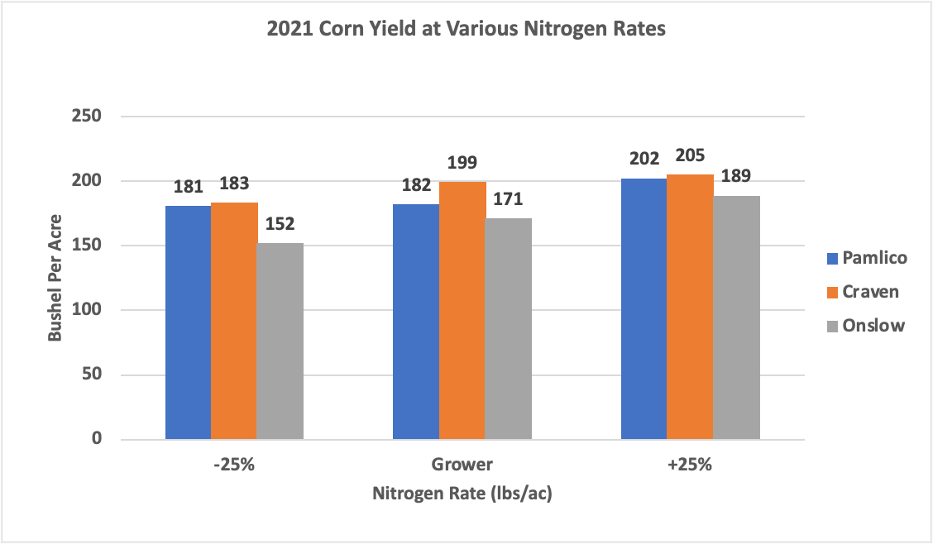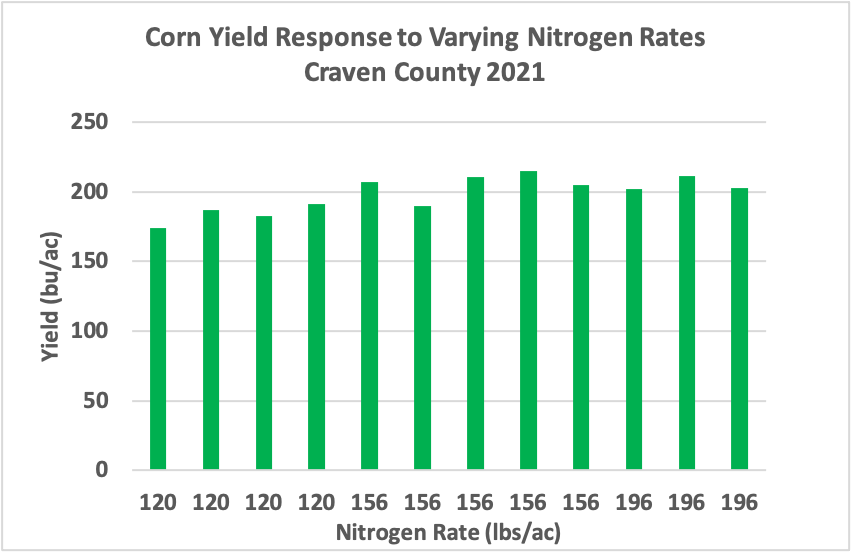Corn Nitrogen Study: Comparison of Grower Nitrogen Rate To ± 25% Rates
go.ncsu.edu/readext?832015
en Español / em Português
El inglés es el idioma de control de esta página. En la medida en que haya algún conflicto entre la traducción al inglés y la traducción, el inglés prevalece.
Al hacer clic en el enlace de traducción se activa un servicio de traducción gratuito para convertir la página al español. Al igual que con cualquier traducción por Internet, la conversión no es sensible al contexto y puede que no traduzca el texto en su significado original. NC State Extension no garantiza la exactitud del texto traducido. Por favor, tenga en cuenta que algunas aplicaciones y/o servicios pueden no funcionar como se espera cuando se traducen.
Português
Inglês é o idioma de controle desta página. Na medida que haja algum conflito entre o texto original em Inglês e a tradução, o Inglês prevalece.
Ao clicar no link de tradução, um serviço gratuito de tradução será ativado para converter a página para o Português. Como em qualquer tradução pela internet, a conversão não é sensivel ao contexto e pode não ocorrer a tradução para o significado orginal. O serviço de Extensão da Carolina do Norte (NC State Extension) não garante a exatidão do texto traduzido. Por favor, observe que algumas funções ou serviços podem não funcionar como esperado após a tradução.
English
English is the controlling language of this page. To the extent there is any conflict between the English text and the translation, English controls.
Clicking on the translation link activates a free translation service to convert the page to Spanish. As with any Internet translation, the conversion is not context-sensitive and may not translate the text to its original meaning. NC State Extension does not guarantee the accuracy of the translated text. Please note that some applications and/or services may not function as expected when translated.
Collapse ▲Over the past few years, the Corn Growers’ Association of NC as well as N.C. Cooperative Extension of Pamlico and Craven Counties has provided funding and support to refurbish a sprayer system. This year we cooperated with producers to create a replicated study comparing nitrogen (N) rates. Each site applied the grower selected rate and 25% above and below this rate. Plots were either hand harvested or harvested by NC State University harvest equipment.
Data from these studies show that the NC Realistic Yield Expectation Recommendations for corn is the best N rate. This data reflect similar studies across the state demonstrating that growers could typically reduce nitrogen rates without negatively impacting corn yield. It also demonstrates a point that while N is indeed considered a major limiting yield factor, we correct this problem when we utilize suggested RYE N rates. Low N is seldom is the primary cause for poor corn yield! Rather improper soil pH, soil hard pans, poor drainage, varietal choice inappropriate for the soil type, planting date, or some major pest such as stinkbug damage are typically the primary cause for poor yield.
As noted from the data, rates of N vary from 101-123 lbs/ac for the lower N rates, 139-164 lbs/ac or the grower selected N rate, and 178-205 lbs/ac for the highest N rates. Both the Craven and Onslow sites show a significant difference between the highest and lowest N rates. At the Pamlico site, there is no significant difference between the lowest N rate and the grower selected rated but both are significantly lower than the highest N rate. Given our almost ideal growing conditions, this is what should be expected.

 Differing letters relate to significantly differing corn yield based on the corresponding nitrogen rate at each test location. Each test site data should be examined independently.
Differing letters relate to significantly differing corn yield based on the corresponding nitrogen rate at each test location. Each test site data should be examined independently.
Consider that the corn yield at the lowest N rates (101-123 lbs/ac) ranged from 152- 182 bu/ac. Data from the grower selected rates show similar results. Only at the Pamlico site did adding additional N result in greater N use and yield. (As in real life, exceptions exists!) The main point is that this data demonstrates the corn plant’s ability to utilize N more efficiently due to better management and breeding.
Lastly, as example, consider the yield of each individual plot at the Craven site. About the only real notable difference is that the lowest N rate was consistently lower than the grower or higher rate. In fact, the grower selected rate was actually numerically the highest yield. Given the current high price of N as well as potential inability to obtain products timely, the data shows that lower rates applied timely should not limit yield.
Hopefully, the opportunity to examine more data and discussion regarding N use will be available for those seeking to maintain high yield yet increase profit. One such meeting, Using Fertilizers More Efficiently, presented by NC State University faculty, can be reviewed online. The bottom line is that one can indeed reduce total N rates without losing yield potential.





